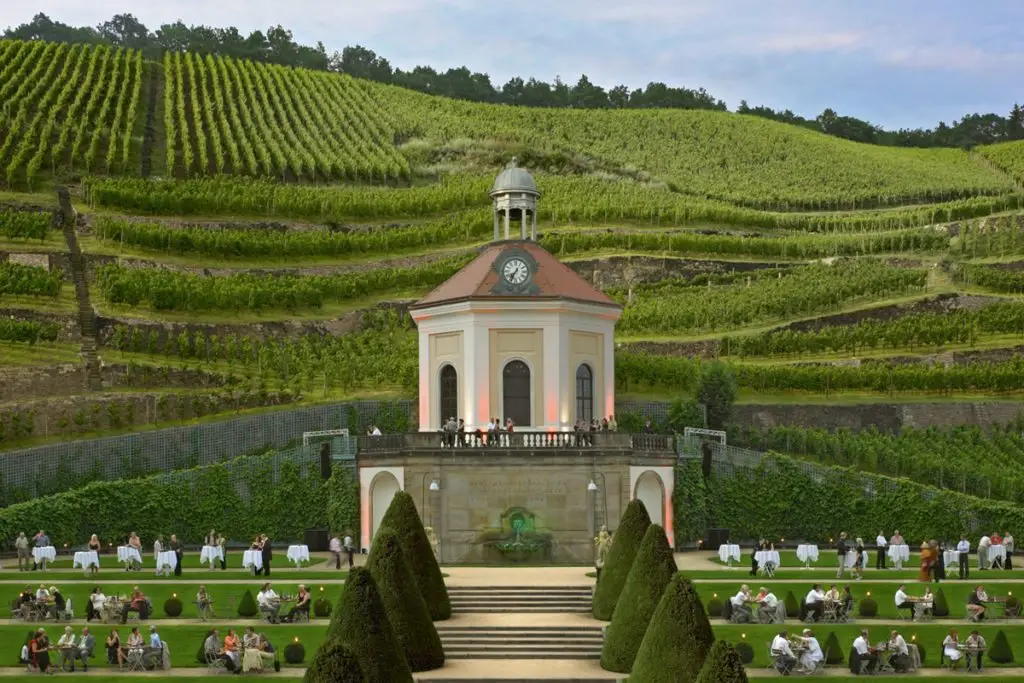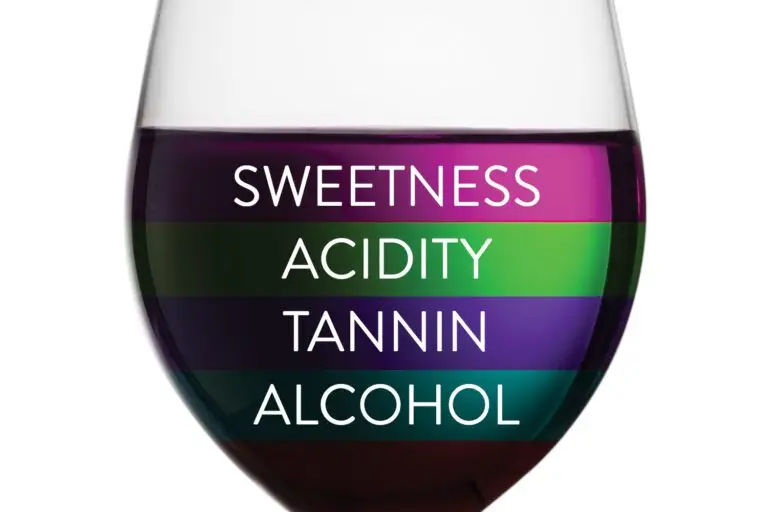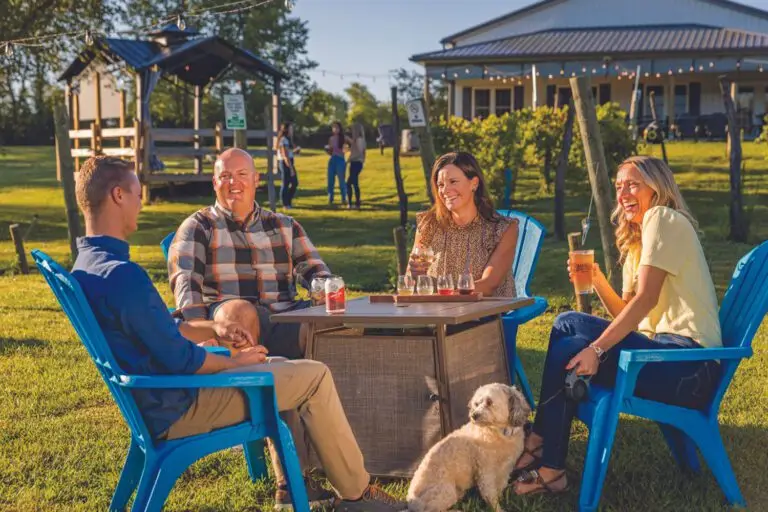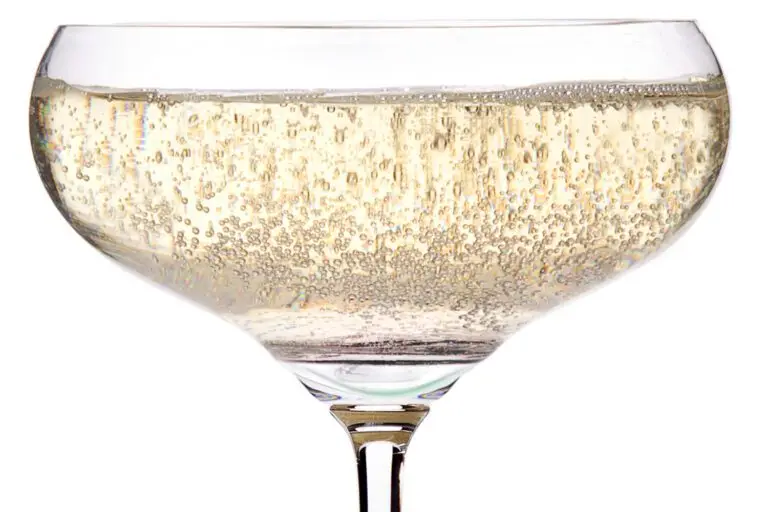The secret is out of the bottle: talented vintners are leading a renaissance in Germany’s Saxony wine region.
Saxony is Germany’s smallest and Europe’s northernmost wine region, with approximately 35 vineyards, many situated along the picturesque Elbe River, and its viniculture is getting a lot of well-deserved attention these days. Travelers are just beginning to discover this place, and you can explore it by train, car, bicycle and even on foot.
Once part of the German Democratic Republic (until the fall of the Berlin Wall in 1989), Saxony has been home to wine production for the last 850 years. It is believed the first vine was planted by Bishop Benno von Meissen in the late 1100s to produce wine for Catholic Church services. But as might be expected, wars over the centuries, and government mandates during the region’s rule under Communism, dampened interest in advancing wine production.
Now, that has changed. Wines here are mostly whites – approximately 80 percent of the 37 grape varieties grown in the region. Goldriesling, grown exclusively in Saxony, is particularly notable. Other popular wines are the Müller-Thurgau, Riesling, Weissburgunder (Pinot Blanc) dry and fruity whites, and Pinot Noir and Dornfelder red wines. Visitors also might enjoy Elbtal-Sekt, a sparkling wine that’s also unique to this region.
With a few exceptions, local grapes are grown on hillside terraces. Unfortunately, none of Saxony’s splendid wines have reached American shores yet because wineries there just don’t produce enough to export. They do, however, receive rave reviews.
This year marks the 25th anniversary of the Saxony Wine Route, which covers just over 34 miles by car. The trail stretches from Pillnitz in the south to Dresden, Radebeul, and Meissen in the north. Many visitors who want to explore the wine region make their home base in Dresden, although the towns of Meissen (world renowned for its porcelain) and Pirna are close behind.
Bicyclists can pedal along the Elbe Cycle Route that parallels sections of the wine road. Nicknamed the “Saxon Riviera,” the bicycle route parallels a good portion of the Elbe River.
Here are some stops along the route:
Schloss Proschwitz winery, the largest (87 hectares) in Saxony, is located outside of Meissen. It had operated since the 1800s, but the family lost its home and vineyards to the Communist regime and were forced to leave after World War II. Soon after reunification, though, the family bought back their home and vineyards. Pinot Gris is the star grape here.
Another major winery is the state-owned Schloss Wackerbarth in Radebeul, producer of sparkling wines for centuries. During its ownership by the German Democratic Republic, wines made here often were exported to other countries in the Communist bloc.
The most unusual stop along the route is Zimmerling Winery near Pilnitz. Klaus Zimmerling and his sculptor wife, Malgorzata Chodakowsk, own this winery where I sat with friends, sipping wine and admiring Chodakowsk’s life-size statues scattered throughout the vineyard and surrounding buildings.
The people of Saxony love to celebrate their wines. Every August, a winery crawl called Winzer-hopping guides carousers to 40 estates and smaller winegrowers in the Elbe valley, where they found vineyard and cellar tours, tastings and live music. In September, Pirna’s popular wine festival, launched by the Wine Queen of Saxony, takes place at the local monastery complete with music, food, and art shows.
Another popular celebration, the Radebeul Wine Festival, is held in Dresden in late September. Growers from the across the region bring their produce and display it in front of the Friedenskirche church in Dresden while festivalgoers sip regional wines.
And if you’re visiting this fall, consider the special exhibition at the Albrechtsburg in Meissen. It commemorates Benno von Meissen, Saxony’s first saint and “father of Saxony’s grapevines,” until November 5.
In the capital city of Dresden, the cultural jewel in the heart of Saxony, you’ll find a magnificent skyline that includes the dome of the Protestant Church of Our Lady (Frauenkirche), the smaller dome of the Catholic Palace Church (Hofkirche), the roofline of the Semper Opera and the ornate gates to the museums in the Zwinger Palace.
In the past six months, Dresden has added two contemporary jewels, the State Operetta and the renovated Kulturpalast, to its cultural crown, expanding the city’s musical spectrum.
And while you’re touring in Dresden, don’t forget to sample the city’s traditional Christmas treat – world-renowned stollen, a dessert bread containing dried fruit or almonds, and often covered with superfine powdered sugar.
Late summer and early fall are the ideal times to explore the Saxony wine trail and its surrounding cities. The easiest flights are from the US to Berlin, a two-hour drive from Dresden and three hours from Leipzig. Prague in the Czech Republic also is an easy drive from Leipzig – or, if you’re feeling adventurous, try the high-speed trains between Germany’s major cities.
www.germany.travel/en/leisure-and-recreation/scenic-routes/saxon-wine-route.html






One Response
I found this quite interesting. I have friends who consider themselves wine afficiandos. (pardon my spelling.) I will share this article with them.